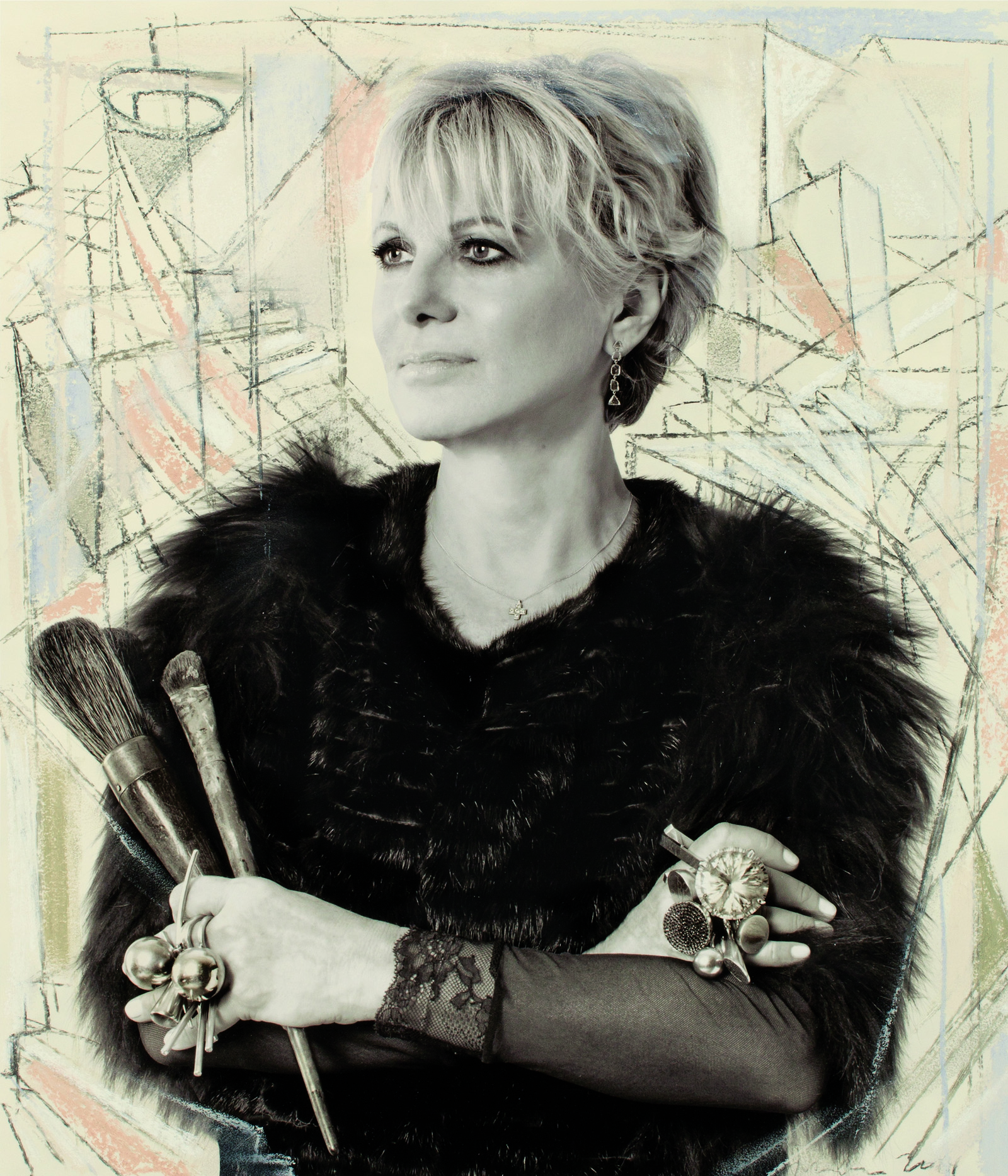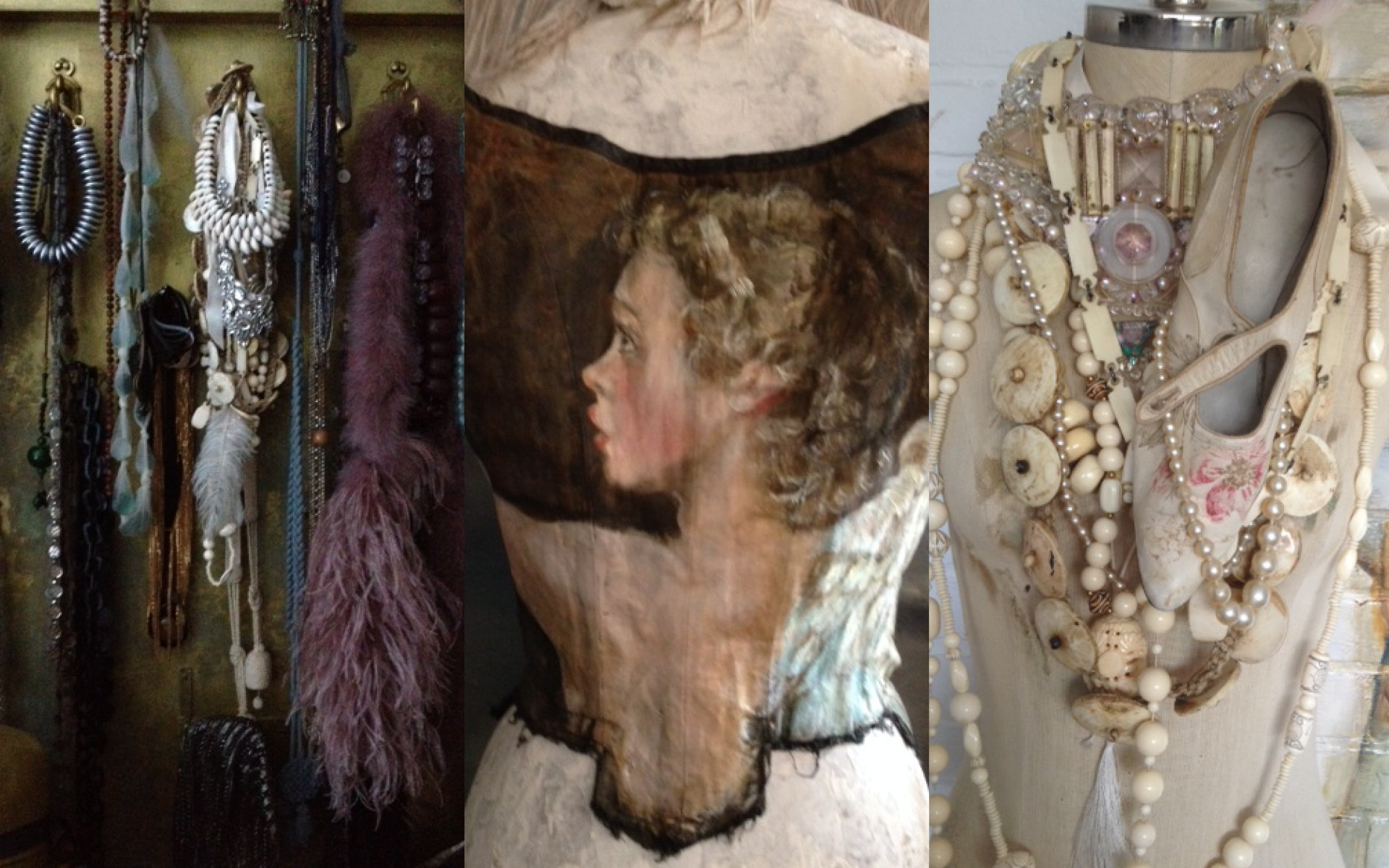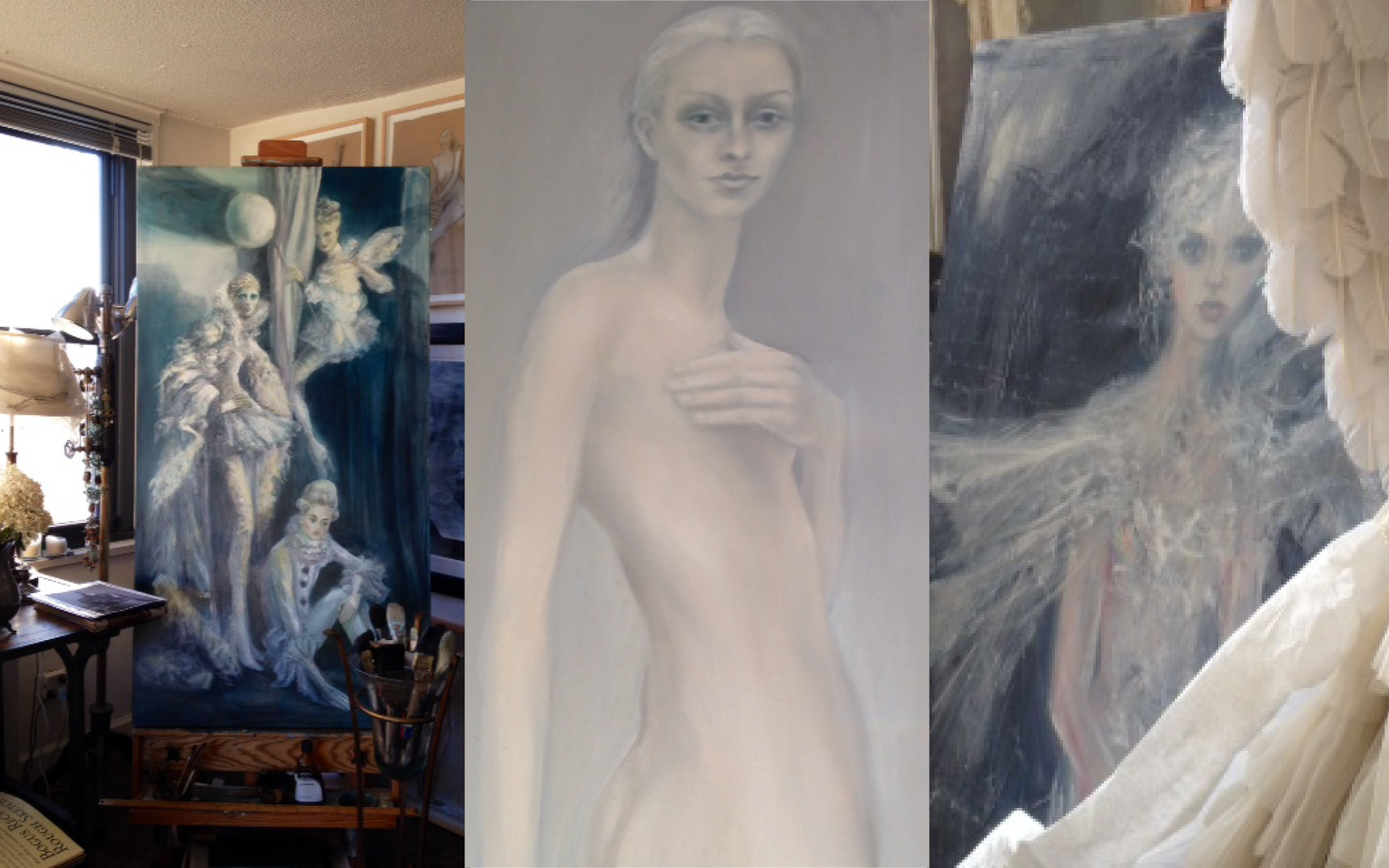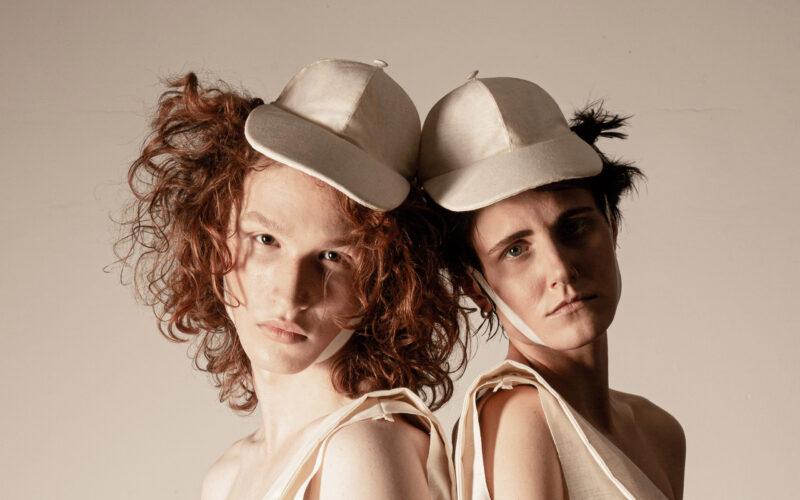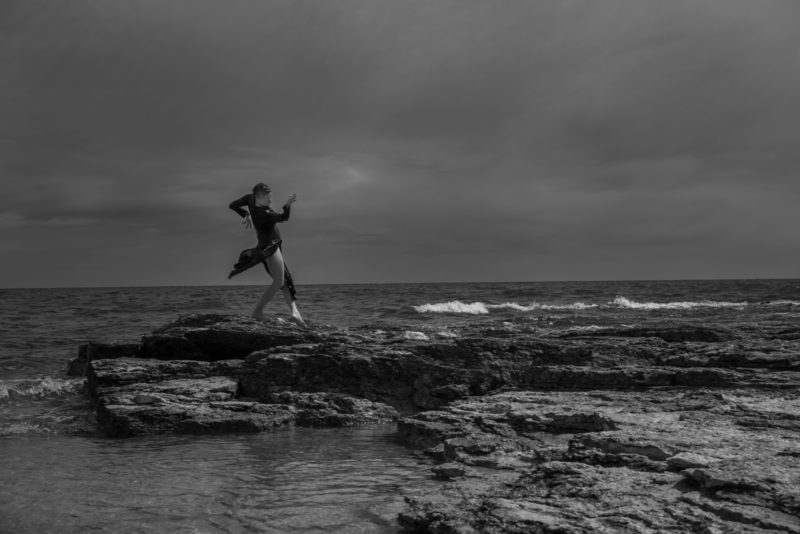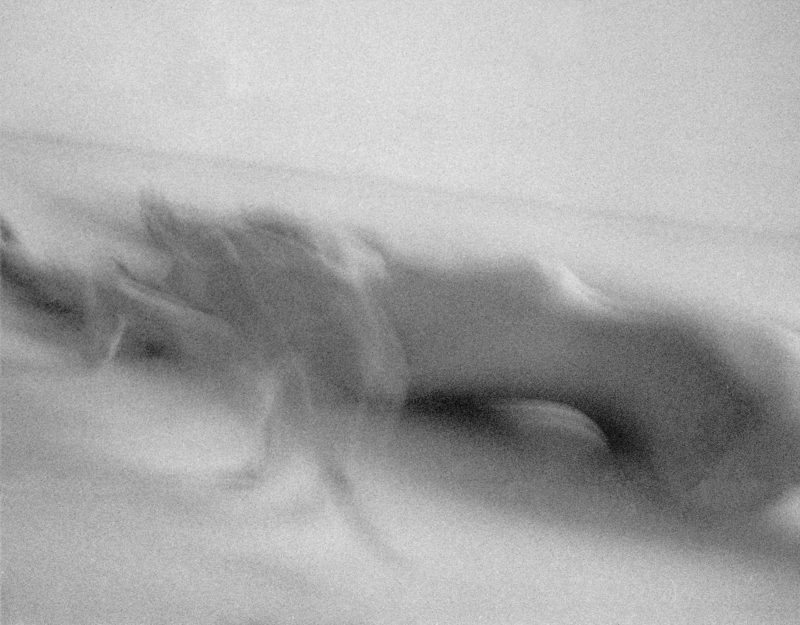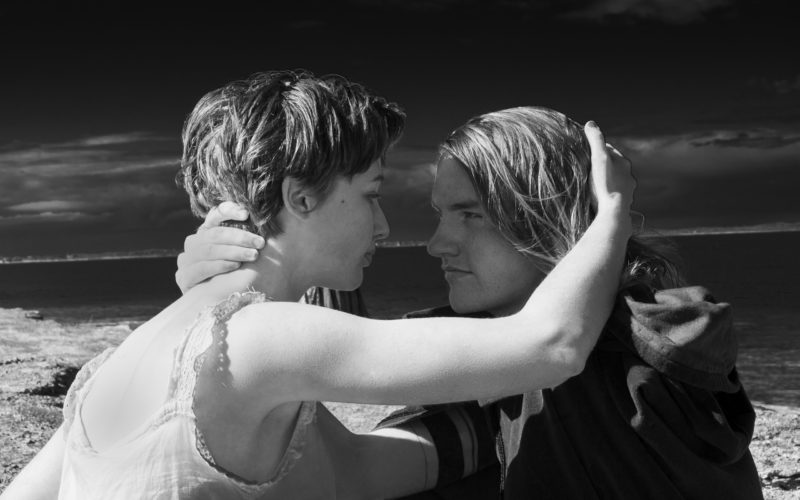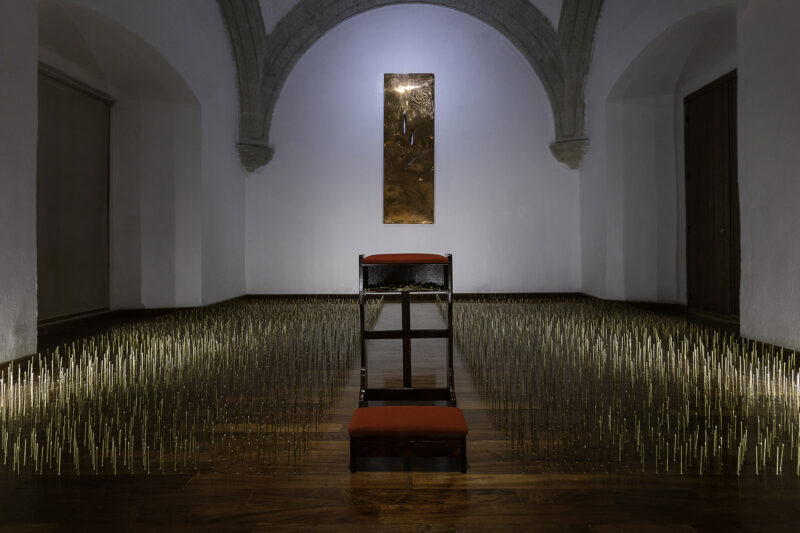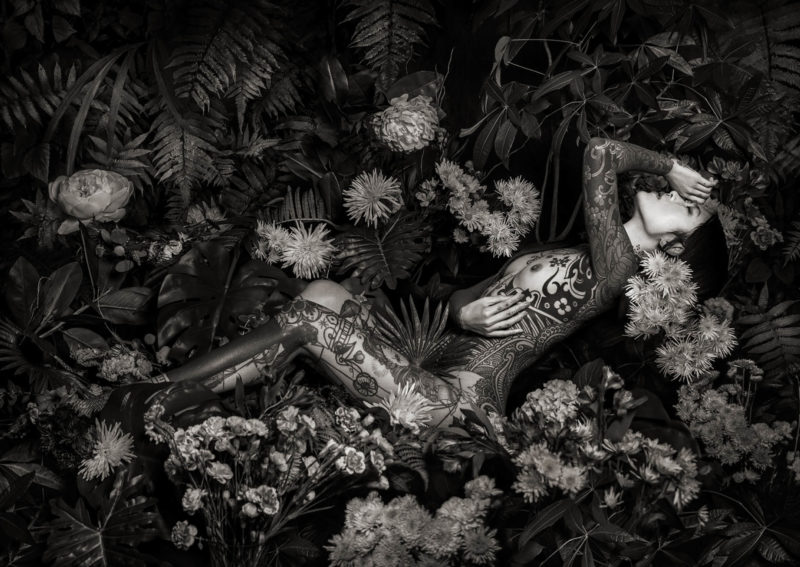It was in the rarefied archive of the vintage fashion collection belonging to my aunt, Lydia Gordon, that I first met artist and designer, Daniela Kamiliotis.
Apart from her beauty and style, and her pattering around in very high-heels, it was her accent that made a special impression on me. Mellifluous… almost Italian sounding, a Romance language for sure… it was Romanian, the land of mystery, romance and vampires.
We quickly became friends and Daniela shared with me her life’s journey and soon invited me to her house in in Connecticut, which also serves as her studio where she creates dreamlike artworks and costumes worthy of fairytales.
The walls of the guest room where i stayed were covered with letters, dating from 1985 to 1991, and written by her mother, father and grandmother. These letters were written during the years of their separation, since she left Bucharest. Six years of love and emotions that now cover the wall, carefully and lovingly preserved.
This is who Daniela is, a sensitive person, true artist.
I am delighted to present you my Interview with Daniela Kamiliotis for Spirit and Flesh magazine. We sat down at her studio and talked all things magical.
We invite you to join!
Cynthia Altoriso: Do you recall a particularly inspiring production in your parents’ careers?
Daniela Kamiliotis: The Crucible by Arthur Miller in which my father played the part of John Proctor, left a deep impression and inspired me to belong to this “wonderland” of a life. I also remember everyday discussion about plays, intonation, costumes, music and my parents’ lives in theater and film. I was mesmerized by the lights on a set, the smell of the stage when the curtain would rise, the paint, makeup, props — everything that gave the illusion of an existence beyond reality. As Picasso said, Everything that you can imagine is real.
CA: In your Connecticut studio, your NYC apartment and your office at Ralph Lauren, the dress form is constant theme.
DK: The forms are a stretched canvas on a body, telling the story that lies within ourselves. Dress forms were always present in the theatre; at home they were used to learn to sew and tailor, and now I use them to help formulate concepts for garments. The forms are the daily witnesses to my life, they are my friends in my studio, each occupying a living space among the easels, drafting tables and colors. They are much closer to me in space, not hanging on the wall like my other works. I can hold and talk to them.
CA: Tell us about your earliest art training.
As Twyla Tharp said, Art is the only way to run away without leaving home.
DK: I started painting in oil on canvas at the age of five, when my grandmother brought me to an artist club where everyone was over 30! I later attended a high school for art called Nicolae Tonitza, and then The Academy of Art Nicolae Grigorescu. I studied painting in all styles and drawing in charcoal, pen and ink, and pencil. I painted murals and furniture and studied engraving in metal – aqua tinta & aqua forte – sculpting in clay and marble. Since I can remember I’ve been surrounded by art, brushes, colors and any tool that helps me escape real world. As Twyla Tharp said, Art is the only way to run away without leaving home.
CA: You represented your country for a program at the International Theater Company in NYC.
DK: In 1981, I received an award from the Romanian Filmmakers Union for my set and costume designs for The Microphone Test, under the direction of Mircea Daneliuc. This helped get my passport approved to come to the U.S. – an amazing feat in socialist Romania! The International Theatre Company introduced me to the very well-known set designer of the Metropolitan Opera, Ming Cho Lee, who recommended I meet Oscar-winning costume designer Theoni Aldredge, an important figure in my life. I then worked with her on the Italian movie Monsignore. I also met my best friend Suzy Benzinger, who became a successful costume designer. I worked with Theoni and Suzy on the Broadway production of Dream Girls and the dress rehearsals made a huge impact on me. Taking what I learned back to Romania, I tried to build my own career.
CA: You moved from fine artist to scenographer, and then you defected.
DK: Coming back to Romania was a great decision, as I worked on many film and theatre productions, won some awards and formed my personality as an artist. Times were hard, but I worked on more than 36 theatre productions: The Dance of Death; Pericles; Woyzeck; Tartuffe; Amadeus and The Three Musketeers to name a few. I also did costumes for the period film Pautelimon by director Dan Pita, The Cruise by Mircea Daneliuc and The Sword Swallower, directed by Alexa Visarion. In 1985 I defected, hoping to get the freedom to express myself as an artist – a right not allowed under the Romanian dictatorship. I organized an exhibit in Greece, sold all my paintings over eight months and learned to speak the language. When I got back to New York on August 26th, 1986, I went back to Theoni who hired me on the spot and I worked with her for several years on some amazing Broadway productions, including The Secret Garden – which I enjoyed the most, Nick And Nora and Oh, Kay!
CA: How did you meet Thanos Kamiliotis?
DK: At the time I was working on the ballet Romeo and Juliet while also sketching for Moonstruck. He’s now my husband of 29 years and, coincidentally, is Greek. Since I couldn’t see my family for five years, he was my true happiness. He helped me bring them here and they lived with us for over ten years! He supports me tremendously by giving me creative space and taking care of all the things I don’t like to deal with – like reality. We truly belonged together since the day we met.
CA: What other important projects have you done?
DK: In 1993 I was invited to France by director Andrei Serban to design costumes for Verdi’s Otello. It was quite an experience to go back to designing on such a huge scale, in a company that included Guy-Claude Francois on sets, music director Alain Guingal and actors Nina Rautio and Vladimir Atlantov. This was a dream come true. While working at Ralph Lauren as a VP of women’s collection, I had a retrospective at the National Arts Club and all my friends and colleagues showed a lot of support. It’s a good feeling to know that traces of my work are present in people’s lives. In 2013 I was approached by the Romanian Cultural Center to work with the young director of innovative theatre, Ana Margineanu on The Window play by Saviana Stanescu. For this I won 2 Innovative Theatre Awards for set and costume design. This served as a reminder that my true love, the stage, is still pulsing under my skin.
CA: Tell us about your Connecticut studio.
The studio is my man-made world, a compilation of art and life, family and history, books and tools, clay and kiln, costumes and wigs crinolines, pressed plants, painted birds flowers, frames, shoes, laces, dress forms, tree trunks and feathered wings. It is my set, and I am the protagonist every weekend.
DK: It’s my refuge and a true reflection of myself. I find all sorts of memories: traces of my parents, pieces of costumes and vintage objects that become a still-life in my compositions of oil on canvas. The studio is my man-made world, a compilation of art and life, family and history, books and tools, clay and kiln, costumes and wigs, crinolines, pressed plants, painted birds, flowers, frames, shoes, laces, hat forms, tree trunks and feathered wings. It is my beloved set, and I am the protagonist every weekend!
CA: Do you have a routine? A studio outfit?
DK: The first outfit I step into is my nightgown, a heavy linen 1900 that I bought years ago in the south of France. And always barefoot! I go like a detective into my own space of creation, and see in the early light what I have done and what I have to do! My studio is my love because it is my echo. It is a territory between present and future, between real and fantasy. During the day, I wear my uniform: a yellow shirt with lots of splashes and colors, rips and repairs, and a pair of 1970s jeans that became one of the outfits I clean my brushes on.
CA: What about your life outside the studio?
DK: When I started at Ralph Lauren, I found the stable, artistic family I left in Romania. I love coming to work and creating dreams. Today I am working as SVP of design in Ralph Lauren women’s collection, creating concepts. I grew a lot in almost 20 years in this job giving and taking inspiration from my daily work. What I like most is that I am fortunate enough to live in the future.
CA: Will you be exhibiting your personal work?
DK: I have being working for more than seven years for an art exhibit titled Virtual Memories where the dress forms, the stretched canvases on bodies, will tell my stories collected from the future. All the material accumulation in my studio will be represented into this diary of dreams. Actually I am not sure when I will stop painting and say My exhibit is done. As the Romans might have said: Ars est celare artem, which means It is true art when you conceal art.
CA: What is your favorite motto in life?
DK: I live by Gauguin’s words: I shut my eyes in order to see.

